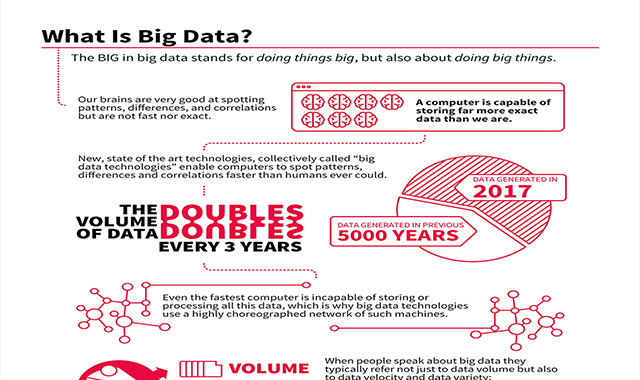The BIG in big data stands for doing things big, but also about doing big things. Our brains are very good at spotting patterns, differences, and correlations but are not fast nor exact. A computer is capable of storing far more exact data than we are. New, state of the art technologies, collectively called “bigdata technologies” enable computers to spot patterns, differences and correlations faster than humans ever could.
The world has generated more data in 2017 than in the previous 5000 years added together. The volume of data continues to double every three years as information pours in from digital platforms, wireless sensors, virtual-reality applications, and billions of mobile phones reports the McKinsey Global Institute. Even the fastest computer is incapable of storing or processing all this data, which is why big data technologies use a highly choreographed network of such machines.
Everyone generates data: people, companies and nature itself. The more data you collect, the more informed your decisions are. Big Data is analyzed to reveal patterns, trends, and associations, especially relating to human behavior and interactions. Big Data is mostly used for predictive analytics, user behavior analytics, or certain other advanced data analytics methods that extract value from data.
Analysis of data sets can find new correlations to spot business trends, prevent diseases, combat crime and so on. Scientists, business executives, practitioners of medicine, advertising and governments alike regularly meet difficulties with large data-sets in areas including Internet search, fintech, urban informatics, and business informatics. Scientists encounter limitations in e-Science work, including meteorology, genomics, connectomics, complex physics simulations, biology and environmental research. Thus, Big Data can help answer the major questions in almost any field of activity.
infographic by: bigstep.com


